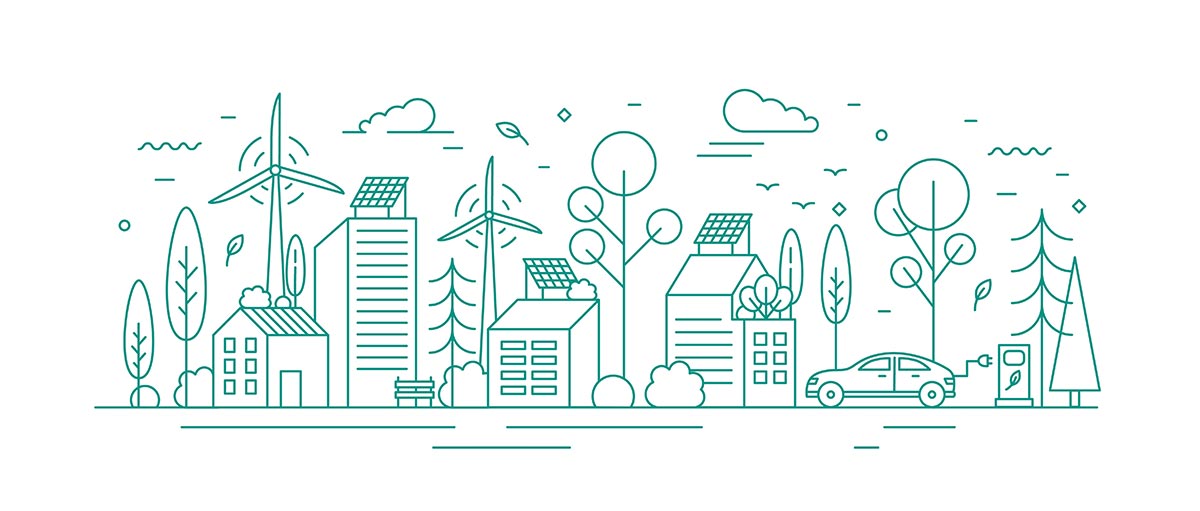In my career as a real estate developer, I’ve been privileged to witness and contribute to the evolving narrative of urban development. Among the most compelling and significant shifts in this narrative is the rise of eco-cities. These are not just urban areas; they are visionary projects that embody our aspirations for a sustainable future. They represent a commitment to the environment, economy, and social equity—values that I, Ravi Uppal, hold dear in all my undertakings.
What are Eco-Cities?
Eco-cities are designed to minimize environmental impact while maximizing human well-being. These cities are more than just a collection of green buildings; they are integrated, holistic systems that consider everything from energy efficiency and pollution reduction to the well-being of their residents. They aim to create a sustainable balance between urban living and the natural world, making them the epitome of sustainable development.
Sustainability at the Core
At the heart of an eco-city is sustainability. This concept extends beyond environmental conservation to include social and economic sustainability. Eco-cities are designed to be places where people can live, work, and play in ways that do not deplete natural resources or degrade the environment. This involves innovative approaches to urban planning, such as green transportation networks, renewable energy systems, and sustainable waste management.
Why Eco-Cities?
The drive towards eco-cities stems from the urgent need to address the environmental challenges posed by traditional urban development, including air and water pollution, urban heat island effects, and inefficient resource use. Eco-cities offer a promising solution to these challenges by:
Reducing Environmental Impact
By integrating green spaces and utilizing sustainable building practices and materials, eco-cities help in significantly reducing the carbon footprint of urban areas. Features like green roofs, solar panels, and energy-efficient appliances are standard in these developments, contributing to a lower environmental impact.
Enhancing Quality of Life
Eco-cities are designed with the well-being of their residents in mind. They offer clean air, ample green space, and facilities that encourage a healthy lifestyle. Additionally, by fostering a community-oriented approach to urban design, eco-cities enhance social interactions and communal living, factors that are often neglected in conventional urban planning.
The Challenges of Building Eco-Cities
While the concept of eco-cities is undoubtedly appealing, their implementation is not without challenges. These include:
High Initial Costs
The technologies and materials needed for building eco-cities can be more expensive than those used in traditional construction. This can make the initial development of eco-cities cost-prohibitive, though it’s important to consider the long-term savings and environmental benefits they bring.
Regulatory and Policy Hurdles
Developing an eco-city often requires navigating complex regulatory environments that may not always support innovative, sustainable urban solutions. Effective collaboration with government bodies and stakeholders is essential to aligning policies with the goals of eco-city projects.
Cultural and Behavioral Change
Adopting a sustainable lifestyle necessary for the success of eco-cities requires a significant shift in behavior and culture. Encouraging residents to change long-established habits, like car dependency, can be a formidable challenge.
How We Are Building Towards the Future
In my own experience, contributing to the development of eco-cities involves a committed approach to innovation, community engagement, and collaboration. Here are some strategies I’ve employed:
Leveraging Technology and Innovation
Utilizing cutting-edge technology in the planning, construction, and operation of buildings is crucial. Smart technologies not only enhance the efficiency of these buildings but also improve the daily lives of the residents by making homes more adaptable and responsive to their needs.
Community Involvement and Education
For eco-cities to thrive, it’s essential that the communities they serve are fully engaged in the process. Educational programs that emphasize the benefits of sustainable living can foster community support, which is vital for the long-term success of eco-cities.
Collaboration Across Sectors
Building an eco-city is a multidisciplinary endeavor that requires the collaboration of architects, engineers, city planners, environmentalists, and business leaders. In my role, I strive to bridge these diverse sectors, bringing together the best ideas and practices to create holistic and sustainable urban environments.
Conclusion
The development of eco-cities is more than a professional pursuit for me—it’s a personal commitment to the future of our planet and its inhabitants. As we look ahead, the integration of nature and technology in urban development is not just desirable but necessary. Eco-cities are not a utopian dream; they are a practical, necessary step towards a sustainable and thriving future for urban living. As leaders in the real estate sector, we have both the opportunity and the responsibility to lead this charge, ensuring that our cities of today are fit for the generations of tomorrow.
